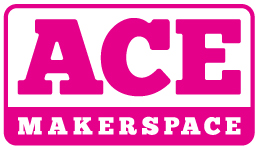Best practices for teams and stewards
An effective communication strategy will establish and support the etiquette that makes your program accessible… social engineering for good.
Rinse. Repeat.
- In order to establish anything as the “norm” it will have to be repeated a minimum of 8 times to any audience, in multiple ways.
- Not everybody learns the same ways and important communications should be in multiple mediums.
- The audience at Ace is always changing. New members and guests are always arriving. New members returning, etc.
Multi-Channel Approach
- Slack
- Newsletters/Email
- Environmental communication
- Wiki Documentation
- Live instruction
Slack
What it is good for
- Disseminating information – to a momentary audience
- Introducing ideas and soliciting feedback – again the audience is limited
- Social Connection – allows for member-to-member transparency and sharing of experiences
- Sharing mechanisms/etiquette
What it is not good for
- Documentation – while information can be mined here it is not a place to store documentation. That place is the wiki.
- Reaching an ever-changing audience… think of it like roadside signs… once they are far enough past they disappear from the zeitgeist.
Email/Newsletters
Email and newsletters are effective for:
- Announcements – New policies, classes, or tools are great in fun short newsletters. The more humor you use the more people will pay attention.
- Reminders – Remember that your audience is always changing and there are new people who weren’t here for previous announcements or behavior reinforcement communications. Send out reminders of policy or etiquette. This type of clear communication is very welcoming
- Celebrations – It can’t all be housekeeping. Celebrate the teams’ achievements, members’ work, etc.
Environmental
The Ace mission is reflected in the Ace Area Set-Up Standards. It is a set of critical thinking questions that are designed to aid the team when doing an analysis of how areas are set up. This analysis should inform how areas are set up and inspire improvement. The point is to make sure we are serving the entire breadth of the users we have and the users we want… especially beginners.
Environmental communications can be permanent, semi-permanent, and temporary signage and iconography. Examples:
- On-machine tool tips
- Signs labeling areas etc
- Materials and tool labels
- Tabletop signs that are only there for certain duration of time.
- The unicorns
The Wiki (yes this one)
The wiki is the home of documentation. It is linked to the tool databases and integrates with slack. If you have answered a question three times it is worth doing a wiki on it. Core documentation should be on the wiki with tags and categories. Examples:
- Use policy
- How to guides
- Helpful learning information
- Videos
Verbal/Live
Many people learn verbally. When connecting with members it is important to know the etiquette or be able to pull it up on the wiki. Often etiquette is established in classes, workshops, and social events. When you have authority be careful what you say… it can become the standard somebody follows.
Expectations are often set on tours. Having well-documented and shared communication with all the tour guides and outreach volunteers is very important.
Without fail people will mimic other people.
Mirror the behavior you want.
Sample Communications Plan
When rolling out a new policy. This suggested plan assumes that feedback and input have already been sought when warranted.
- Announce it in a newsletter… let people know it is coming before it takes effect whenever possible.
- Announce it on Slack when it takes effect
- Pop up a unicorn with a sign and link to the full policy on the wiki
- Install permanent signs/labels when relevant
- Make sure the policy is well documented on the wiki including updating any old policy mentions
- Make sure that operations know about this policy change well ahead of time so it can be integrated into tours.
